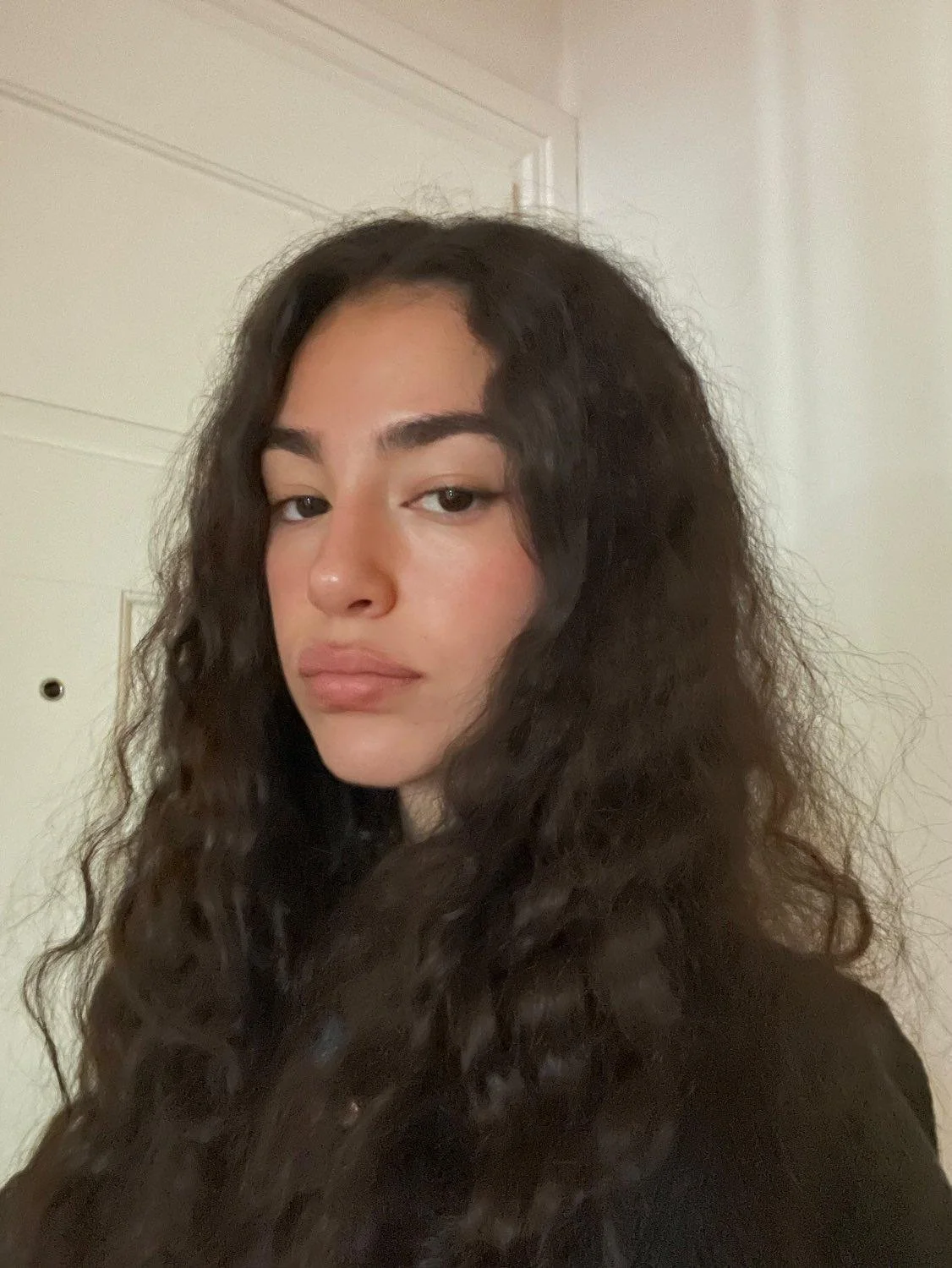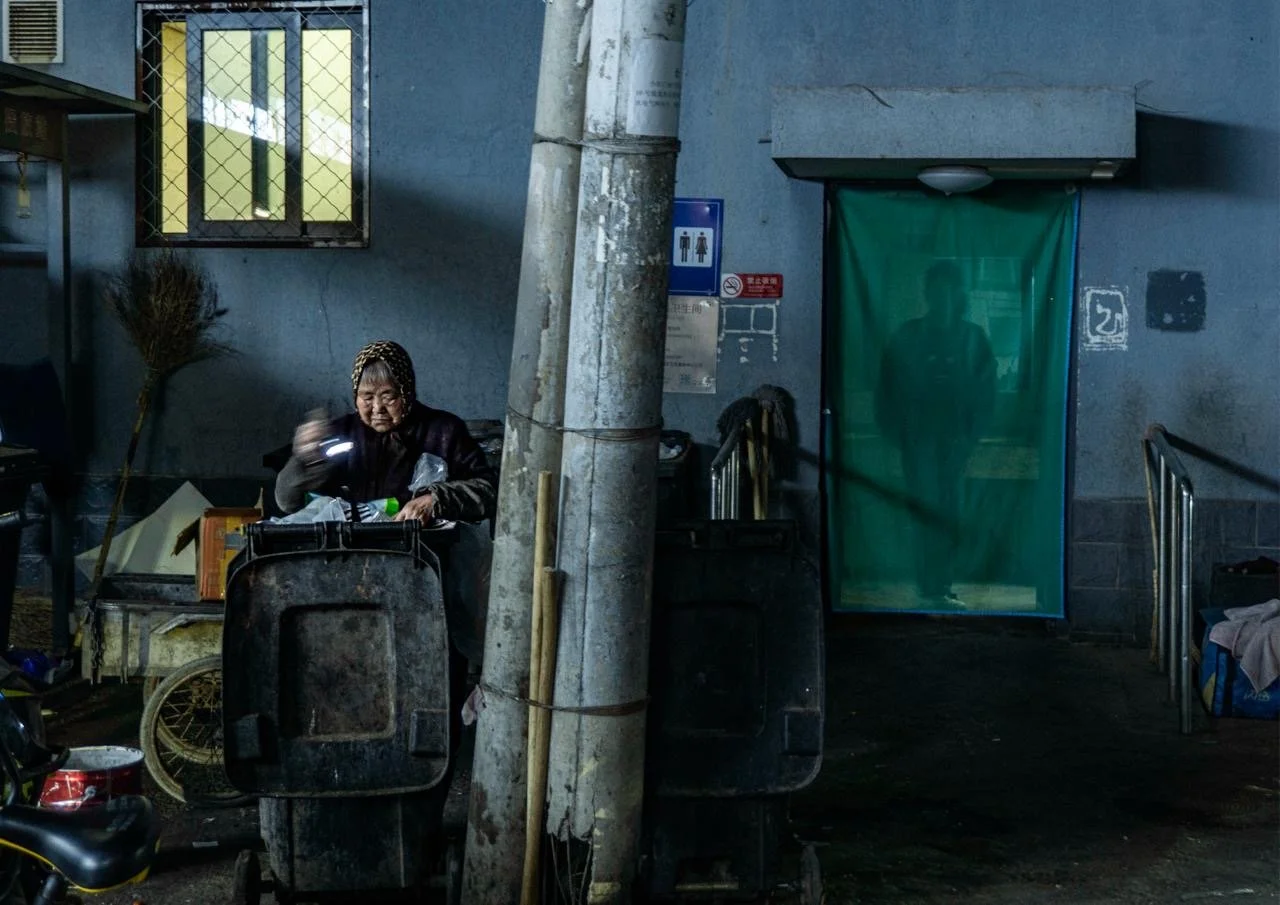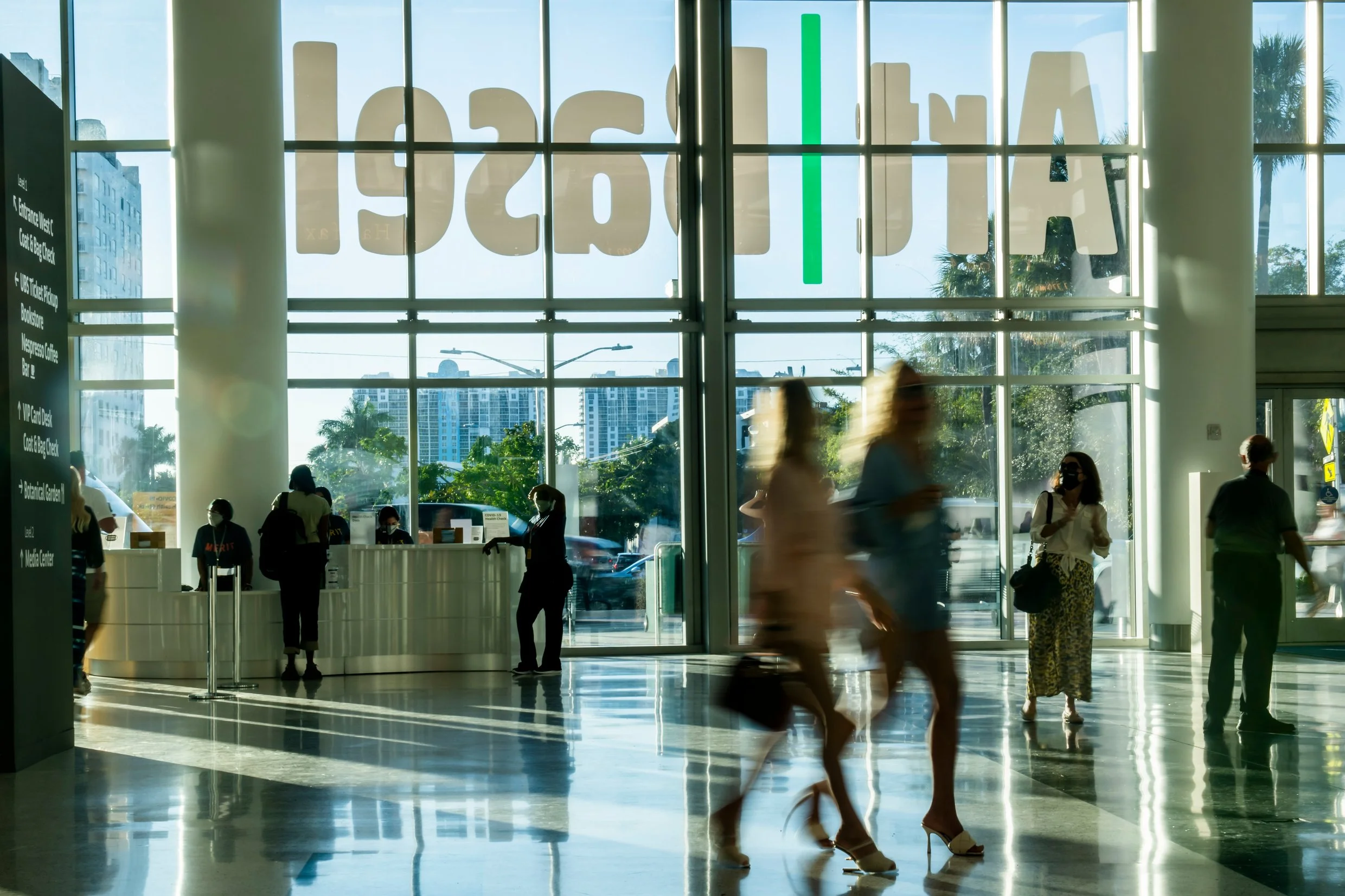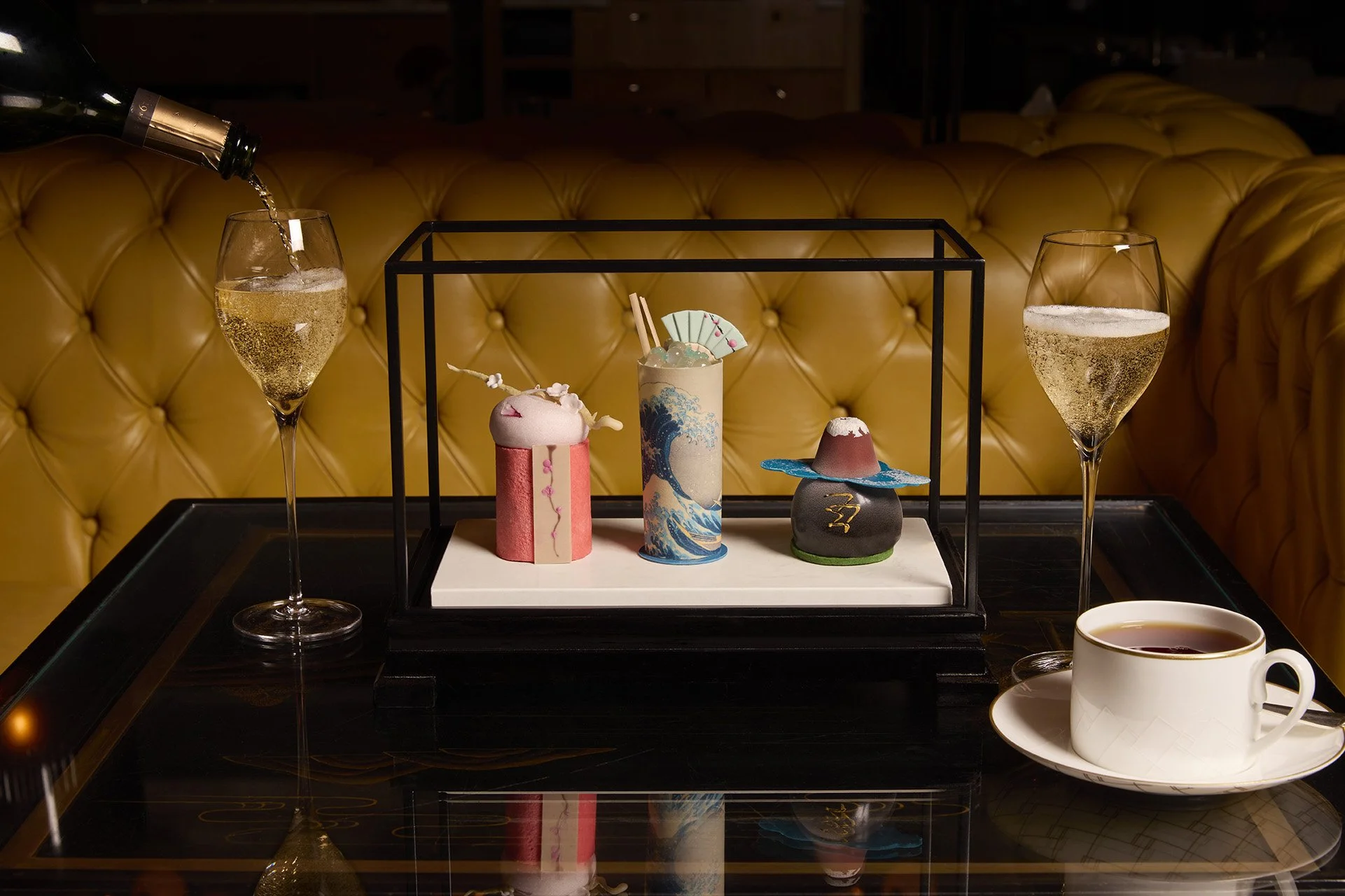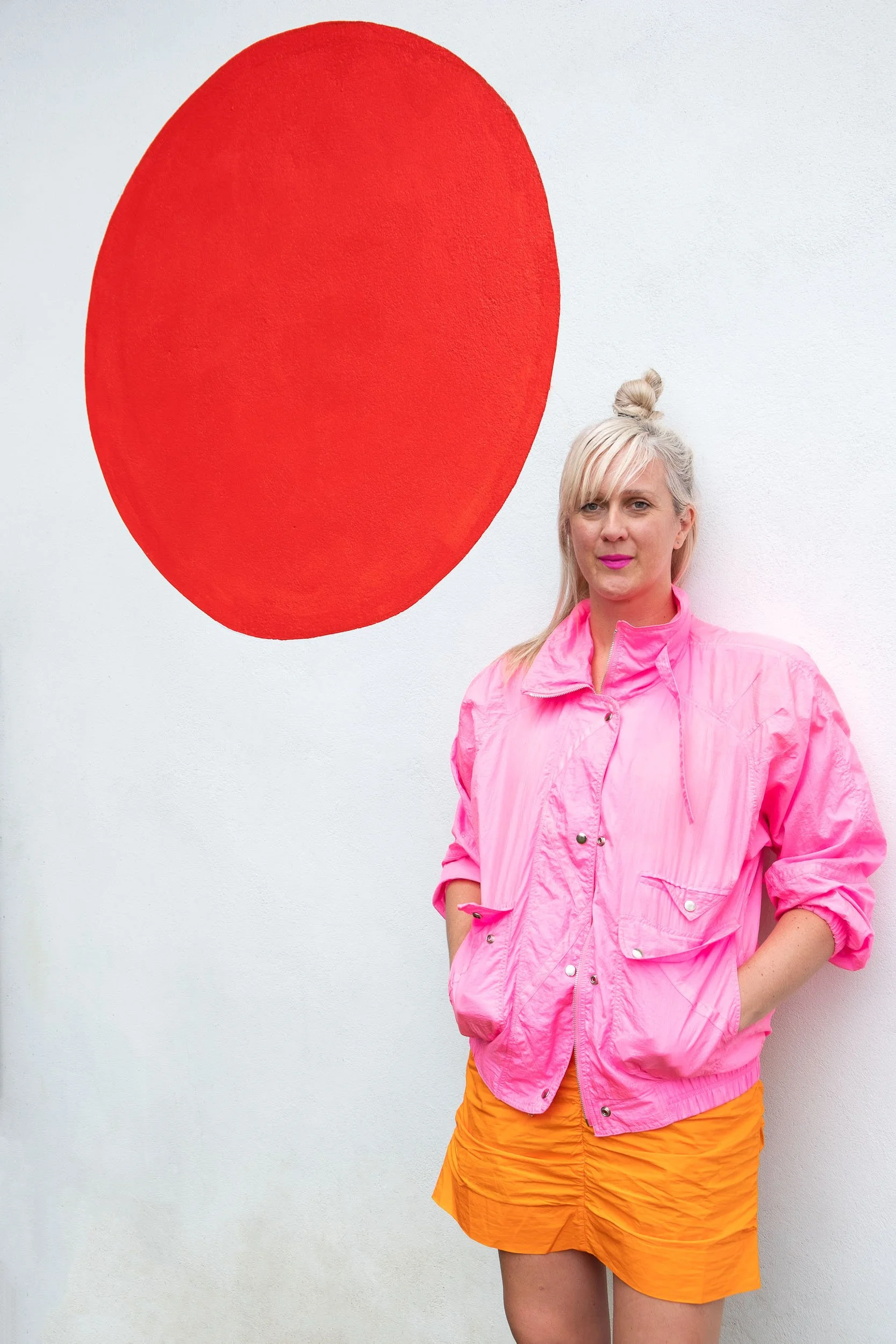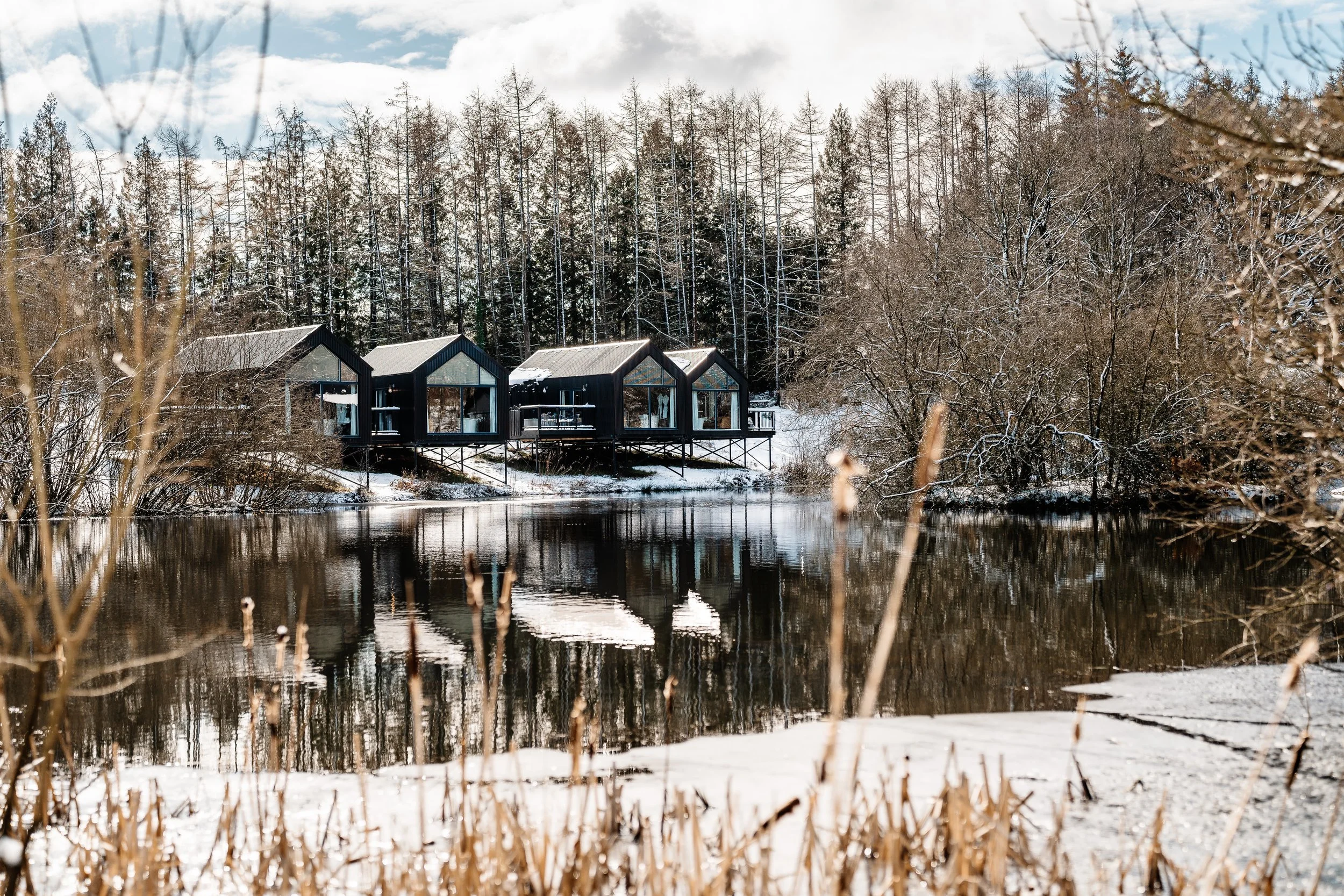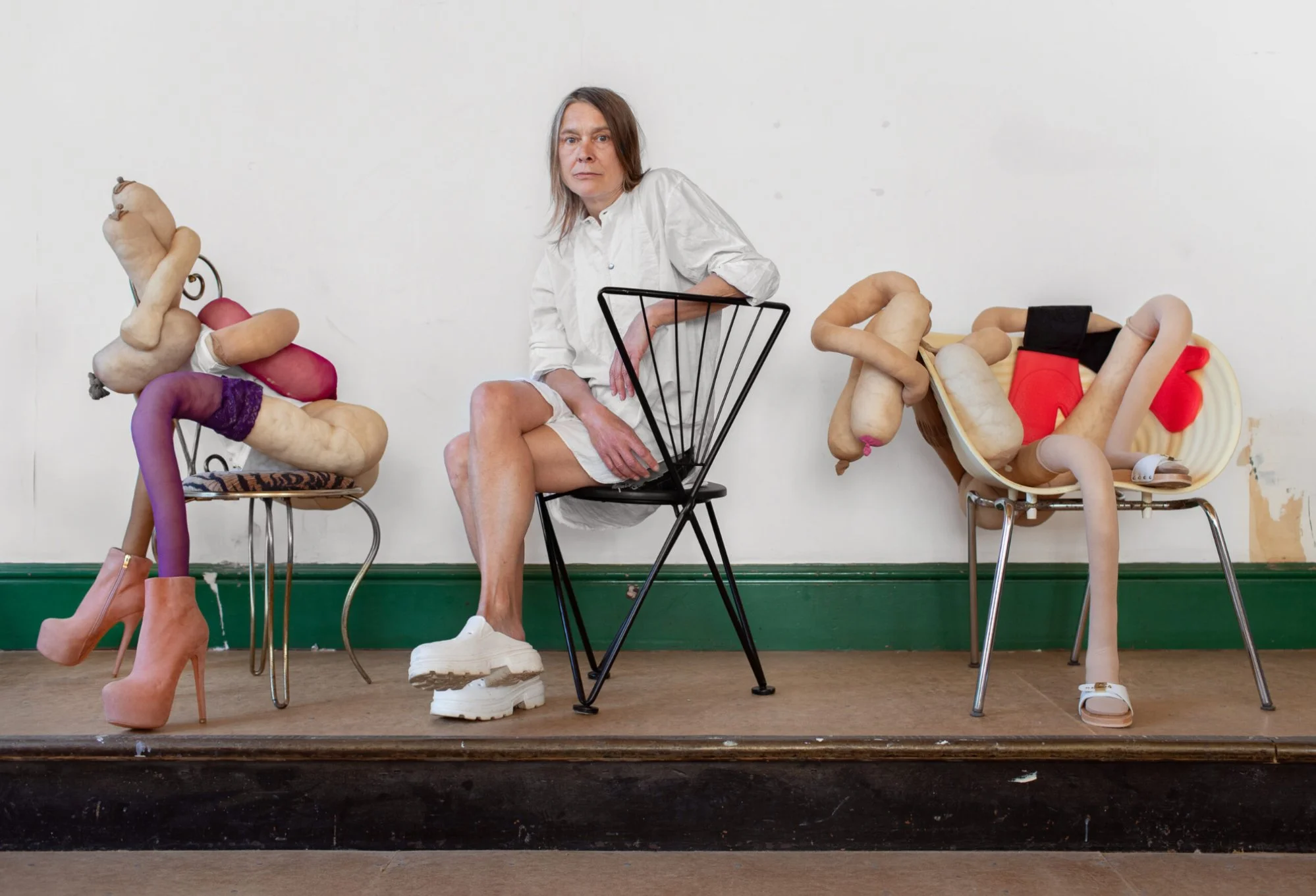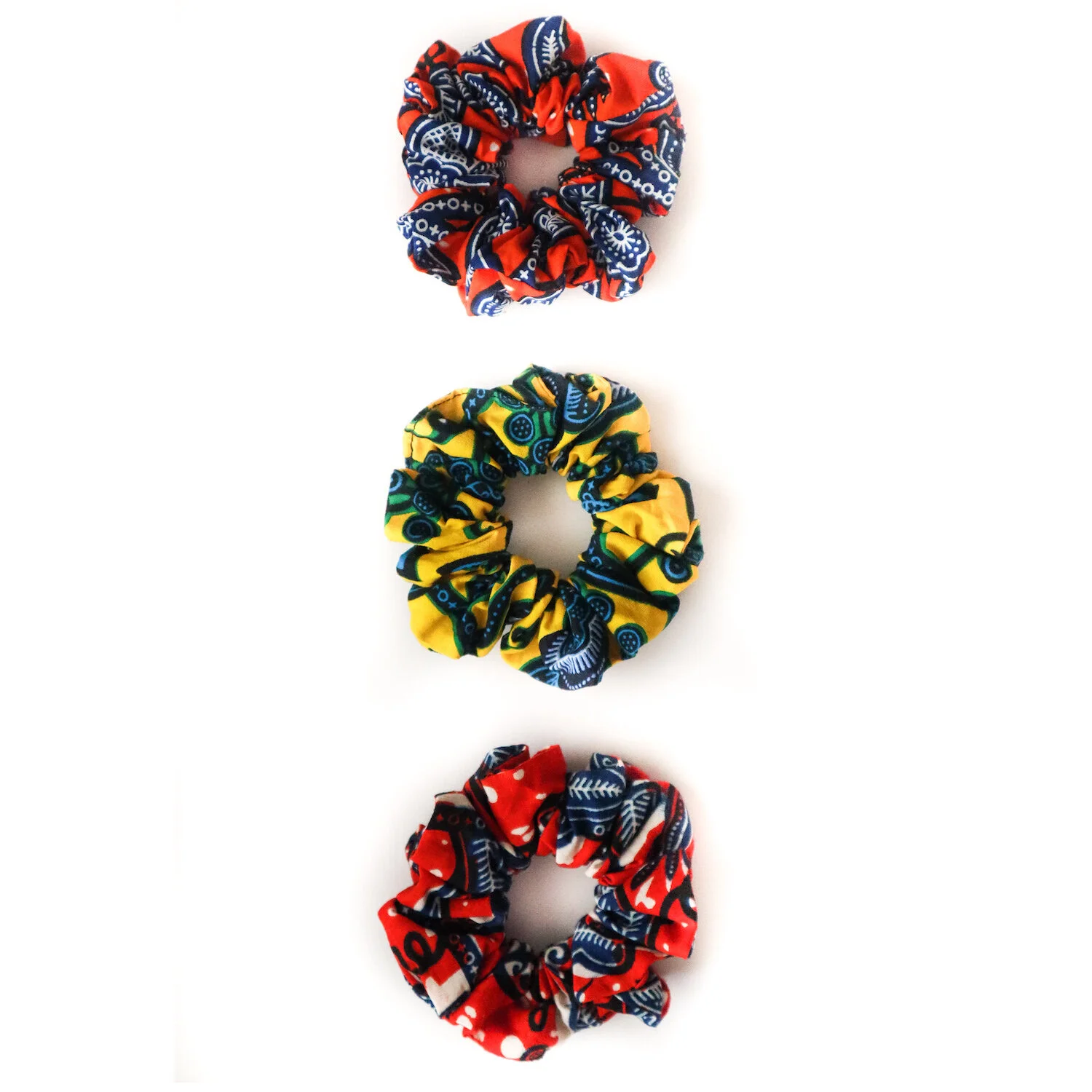In conversation with Lydia Smith
“I realise that human beings have always been at the centre of all phases of my work. I am fascinated by people's behaviours, bodies, backgrounds, and what makes us who we are.”
- Lydia Smith
Lydia Smith at RMS.
Lydia Smith is one to watch. Currently on show in three different places across London, her work can be seen in a solo exhibition in the City, a group show in a chapel in Chelsea and through a new series of monumental sculptures installed outdoors across sprawling parkland. And, it seems, she is just getting started. A multi-disciplined artist working with both historical and contemporary processes to realise her works, through her practice she explores the theme of human connection, which encompasses subtopics including ancient history, technology, science, and spirituality. She uses the physical and digital landscape to create sculptures, paintings and digital art. Working with clay, she enters a flow state, allowing her concepts to express themselves subconsciously; once complete, using her unique method, her work metamorphoses into the digital realm.
How did you begin your journey into art? Did you grow up in a creative environment?
Growing up, the idea of having a career in the creative industry and being a professional artist was frowned upon and mocked. I was continuously told I would never make any money, and someone stated to me, "When your Art fails, at least you will have your computer skills to fall back on.”
This being said, my Grandpa was my creative inspiration. He was a draftsman and a civil servant later in life. I gravitated towards his study and looked through his countless watercolour paintings, poems, riddles, and sketches. I want to host an exhibition of his works to celebrate his life soon, he was a massive supporter of my creativity throughout my childhood and adolescence.
Did you study in a conventional art college? Have you always specialised in sculpture?
I first began sculpting when I was 16. I worked as a shopgirl in a pharmacy on Saturday mornings and as a lifeguard on Saturday afternoons and Sundays to pay for my sculpting tuition during school holidays.
We didn't have the facilities at my secondary school to allow for sculpture so I would make work out of paper mache and air-drying clay.
From there, I applied to several universities for an art foundation, and I got accepted into the University of the Arts London to study at Camberwell, Chelsea, and Wimbledon. I then continued my studies in Technical Arts and Special Effects at Wimbledon College of Art, specialising in Figurative Sculpture.
Can you tell us a bit about what themes and subjects inspire you creatively?
My studio practice focuses on ancient history, spirituality, science, and technology. These themes merge and cross over under the overarching topic of human connection. I work across sculpture, painting and digital art exploring these topics, and I plan to incorporate performance work.
Has this changed over the years or is there a constant?
I realise that human beings have always been at the centre of all phases of my work. I am fascinated by people's behaviours, bodies, backgrounds, and what makes us who we are.
In my older works, I became obsessive over anatomy and structure and was enchanted by the mechanics of the flesh suits we walked around in. These days, I'm abstracting form to challenge the wiring in our brains, and each sculpture is a gateway to a conversation I believe is important surrounding the themes I work with.
Ambition & Perseverance.
What drew you to experimenting with digital and technology in the way you do?
I was first introduced to digital scanning during my time working in the British film industry. We were commissioned to make small-scale sculptures for the set, which were then blown up using technology in 2019. I realised this was a new skill set I should become familiar with, and I began experimenting over the pandemic.
After a few experiments, I realised that the technology was interpreting my sculptures in its own way, not through the use of AI but through glitches and environmental changes like lighting and scanning speed.
This excited me and around that time I was introduced to NFTs and Web3 through an interview with Simon Oldfield on Talk Art, and I decided to jump down the rabbit hole.
Do you see technology as a something you will continue to work with / evolve with? What excites you about working across so many different mediums?
Yes, completely.
It allows me to envision larger and more far-reaching artworks. Each artwork I create, regardless of the medium, has a message attached to it that I want to spread as far as I can and engage with as many people as possible.
I want to help educate and inspire people to connect in the real world again, to learn confidence and communication skills, champion vulnerability and transparency and cultivate friendships.
You seem very busy at the moment! Can you tell us a bit about your current show, Blueprints of Form?
Blueprints of Form is my solo sculptural exhibition currently open with Art Moor House Projects and TBurnsArts, at the St Botolph Building, Aldgate. This exhibition challenges the perceived grid system we subconsciously operate on, following lines on a blueprint instead of taking hold of the pencil and crafting our own way—if you want to! I believe there is no right or wrong way regarding your aspirations and trajectory for your life.
And your artist residence at Royal Masonic School for Girls sounds interesting – how did that come about and how was your experience?
I have been working with the school for a few years, freelance teaching sculpture workshops to the A-Level students. The head of the Art Department (who used to be my teacher at the Misbourne School), Mrs Nicoles, mentioned how it would be great to get the students involved with making large-scale work. I ran with the idea and created a project proposal that surrounded the school's values and mission statement and included the students getting involved, and brought it to the headmaster.
Together we made four monumental works that are now situated in the school 300-acre parkland.
Installation view Blueprints of Form at The St Botolph Building. © Lydia Smith.
Is there anywhere else people can view your work?
Yes, I'm currently exhibiting at The Future is Female at the Garrison Chapel in Chelsea. This all-female show celebrates sculpture and challenges gender bias in the art world.
I'm always open to having guests come and visit me at the studio, which is based in Trafalgar Square, in the ancient vaults of the National Gallery.
What would be your dream project?
I want to erect several monumental sculptures across the world, including some augmented reality experiences.
In the future, I hope to have a sculpture academy where I can create work, have studios for young artists and run residency programs.
And a quick fire 5:
Any upcoming projects of note that you can discuss?
I'm focusing on securing a residency (or several) abroad.
What have been the most rewarding moments of your career thus far?
Sculpting for Great Britain in the International Snow and Ice Carving Championships in Harbin, China.
Inspiring and coaching younger female artists.
What’s the best advice you have ever received?
Trust the process.
Who are you outside of the ‘office’?
There's an outside of the office?
What do you love about London?
Walking, I walk everywhere, and I see everything.
Lydia Smith’s solo exhibition ‘Blueprints of Form’ can be seen at The St Botolph Building (7dh, 138 Houndsditch, London EC3A 7DH) until 15 May 2024.
‘The Future is Female’ is at the Garrison Chapel in Chelsea (London SW1W 8BG) until 6 April 2024.
For more information visit lydiasmith.gallery
Insatgram: @lydiasmithartist















